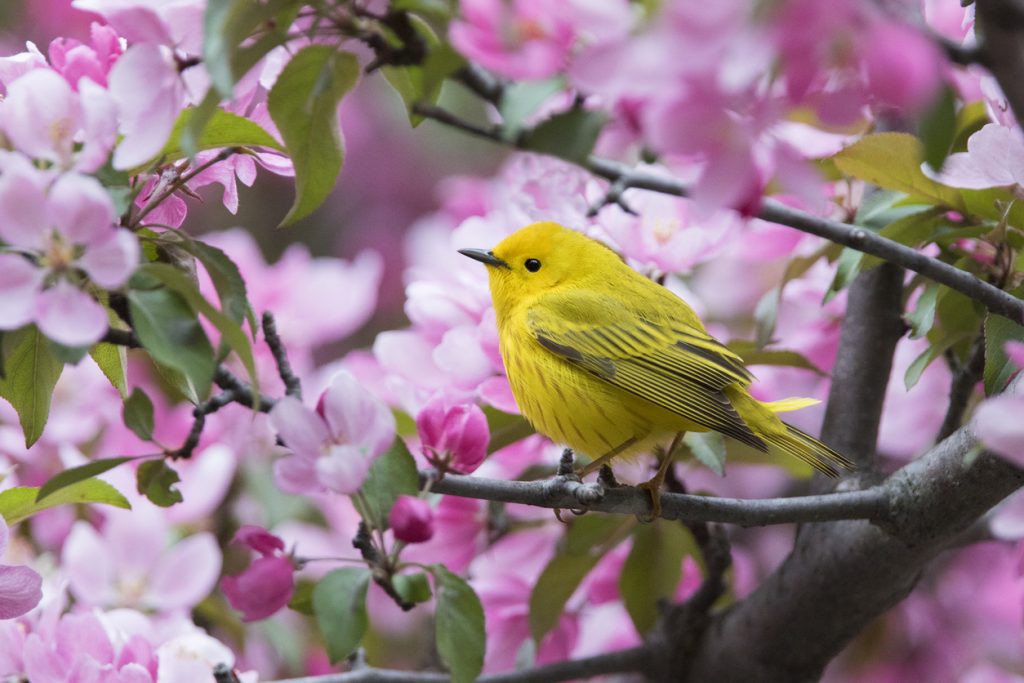Written by Kennedy Hanczyk, B.Sc, Project Manager, Environmental Science, and Elizabeth O’Hara, Intermediate Biologist, Environmental Science, Pinchin Ltd.
Every year on May 12th, conservationists, bird enthusiasts, and nature admirers come together to celebrate World Migratory Bird Day, a global event that sheds light on the ecological importance of migratory birds. World Migratory Bird Day emphasizes the interconnectedness of the ecosystem and the critical role migratory birds play in maintaining ecological balance.
The rich diversity of Canada landscapes, ranging from forests to wetlands, rivers, and lakes, serves as enticing habitat for various bird species. Canada is home to more than 450 native migrating birds that return to our country each spring to nest and breed, before returning south in the fall (Environment and Climate Change Canada, 2019). Birds migrate to find breeding grounds, food sources, and favorable climates to optimize their changes of survival and reproduction. The timing on migration is diverse and heavily dependent on the species, with birds of prey and blackbirds arriving around mid march to warblers arriving towards mid may. The appearance of Red-winged Blackbirds (Agelaius phoeniceus) is one of the first signs of spring and often the beginning of the migration season. The distinctive red, yellow, and black wings is the best way to identify a Red-winged Blackbird, while keeping an ear out for a “conk-la-ree” call.

Red-winged Blackbird
This year’s theme for World Migratory Bird Day is “Insects and their importance to bird life,” which sheds light on the symbiotic relationship between birds and insects. Migratory Birds rely on insects as a primary food source, not only during their breeding season, but also during their long migratory journeys. Along their migration routes, birds actively seek out insects in fields, forests, wetlands, and over bodies of water during stopovers to replenish their energy reserves. The abundance and availability of insects, affects the timing, duration, and overall success of bird migration. Birds also play a crucial role in controlling insect populations. Species such as swallows, warblers and flycatchers are notorious for their ability to catch and consume large numbers of insects daily, which helps controls pests that could otherwise damage crops, forests, and other vegetation. However, the loss of migratory bird’s critical habitats, such as wetlands, forests, and waterbodies, poses a serious threat to their populations and their ability to control insect populations.

Colorful barn swallow bird 
Yellow warbler in blossom
Pinchin’s Environmental Science (ENS) Group collaborates with clients to develop innovative solutions aimed at mitigating the impact of development on birds and their habitats. A practical illustration of Pinchin’s commitment to conservation can be found at a site in Pelham, Ontario. The site’s natural features include wetlands, watercourses, and woodlands that hold the potential to offer essential habitats for species-at-risk birds, including Wood Thrush (Hylocichla mustelina), Red-headed Woodpecker (Melanerpes erythrocephalus), Hooded Warbler (Wilsonia citrina), and many more. Breeding Bird surveys were conducted meticulously on the Site and proposed woodland restoration to ensure that no woodland habitat for the above bird species would be disrupted by the proposed development. Confirming the presence or absence of breeding birds, through breeding bird surveys and habitat restoration, allows Pinchin to provide appropriate recommendations for protecting migratory birds while tailoring to the Clients needs. To learn more about how Pinchin ENS helps to protect migratory birds and their habitat on projects visit our Environmental Sciences page!
Reference
Environment and Climate Change Canada. 2019. Migratory birds overview. Retrieved on May 1, 2024 from https://www.canada.ca/en/environment-climate-change/services/birds-canada/migratory-birds-overview.html